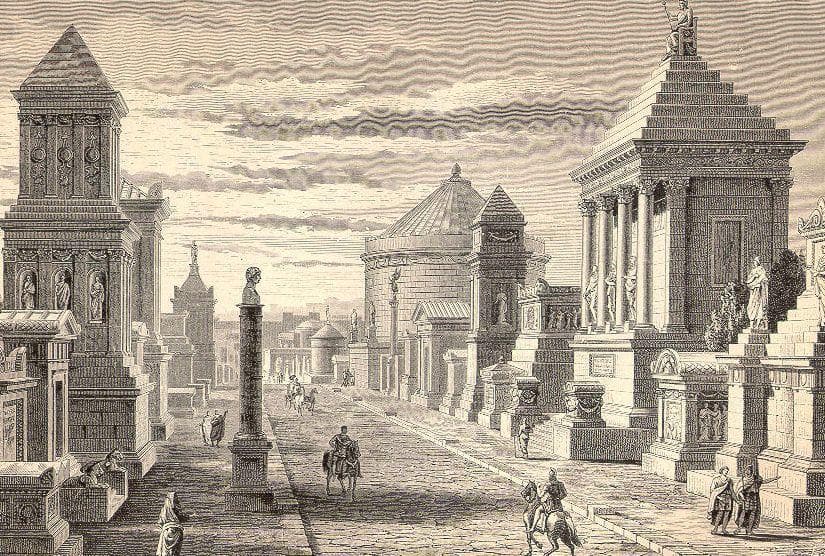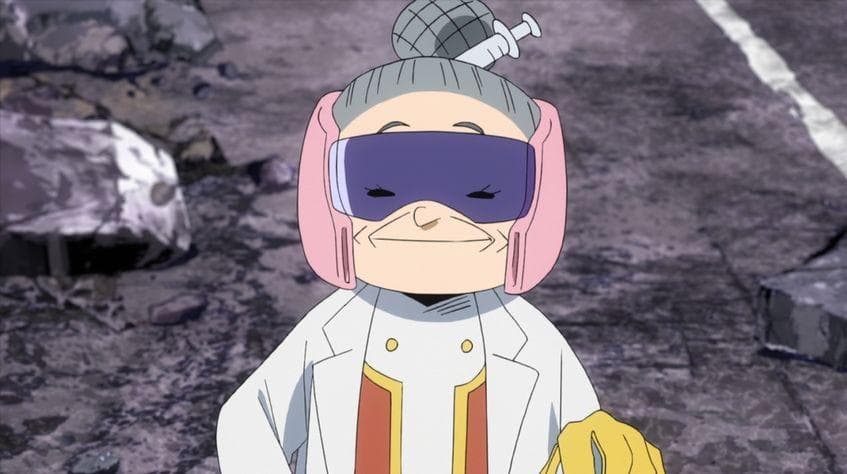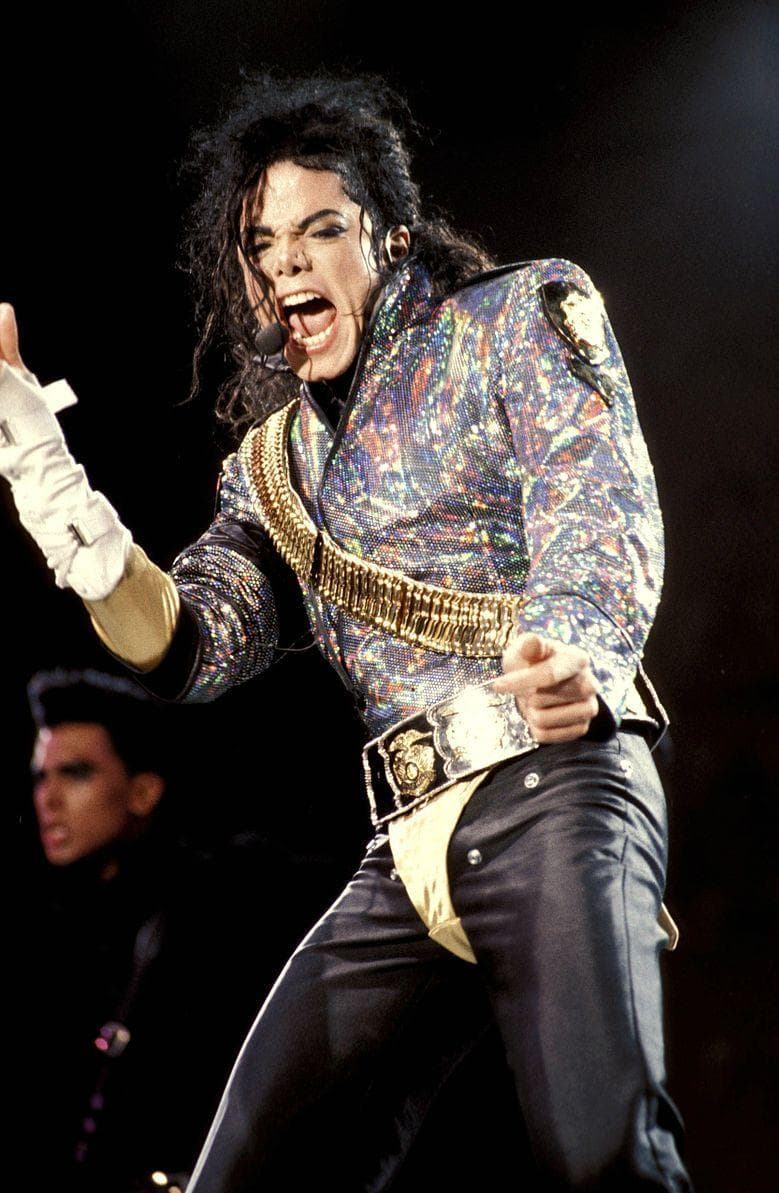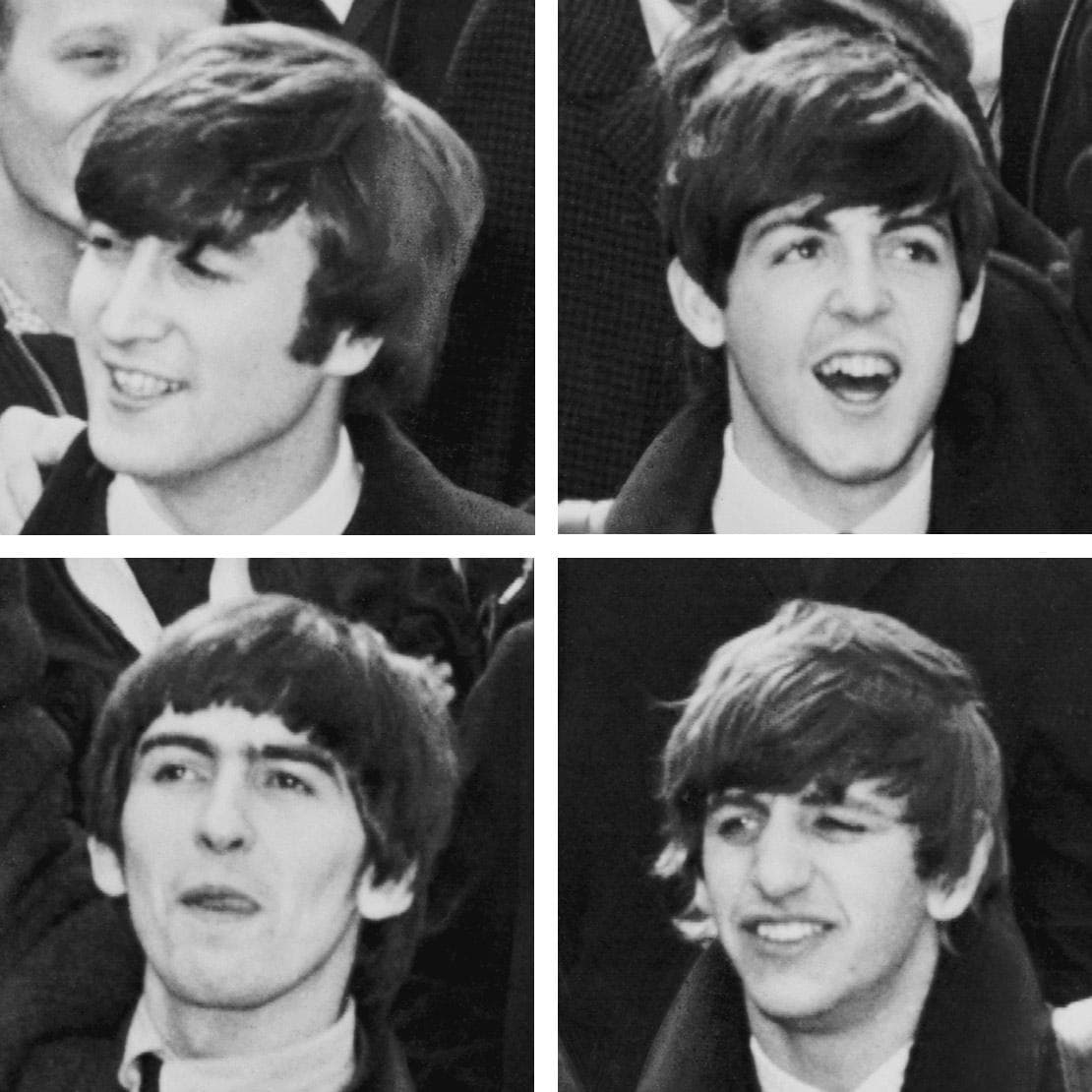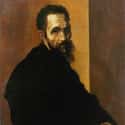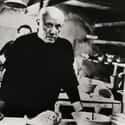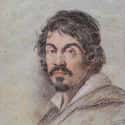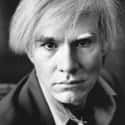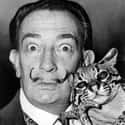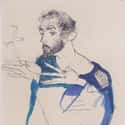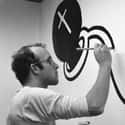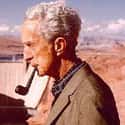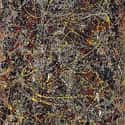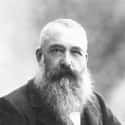-
(#1) Michelangelo
- Dec. at 89 (1475-1564)
Michelangelo, the painter of the Sistine Chapel, was one of the lucky artists who became famous during his lifetime. However, despite his wealth, Michelangelo was pretty lackluster in the hygiene department. He apparently never bathed and rarely changed his clothes. In fact, on his deathbed, it is believed that his clothing had to be peeled off of him. It may have been 500 years ago, but FYI, this was still considered very disgusting.
-
(#2) Pablo Picasso
- Dec. at 92 (1881-1973)
Whatever career path you choose, it seems you get asked the same questions over and over again. Most people just grin and bear it, but Picasso had other ideas. When people would ask about the meaning of his paintings, question the almighty Cézanne (who was a close friend), or just rub him the wrong way in general, he would point his revolver at them. Don't worry, he's not a mass murderer: the gun was filled with blanks, but it still sends a message.
-
(#3) Caravaggio
- Dec. at 39 (1571-1610)
Caravaggio did things his own way, which was a little more unorthodox(and violent) than most. He lived by his own complicated and severe honor code in which missteps were met with oddly specific physical punishments. For example, a Roman waiter questioning the painter's meal got a plate smashed in his mouth, and Caravaggio night-stalked a young painter who had insulted him behind his back and attacked him with a sword.
-
(#4) Andy Warhol
- Dec. at 59 (1928-1987)
The famed painter of the Campbell's soup can unsurprisingly had a thing for objects. At the end of every month, he would put together dated time capsules that included many memory-filled tokens, such as a mummified foot or Clark Gable's boots. You know, just the charming stuff.
-
(#5) Salvador Dalí
- Dec. at 85 (1904-1989)
Salvador Dalí made a point throughout his life of being as weird as possible. These efforts included owning an ocelot that he would walk throughout the city, having a very weird mustache, and speaking in the third person. He did not miss an opportunity to surprise, no matter how unnecessary it was. This is exemplified by his habit of stealing pens from fans who asked him for autographs. It's pretty harmless, but it's doubtful that he needed all of those pens.
-
(#6) Gustav Klimt
- Dec. at 56 (1862-1918)
Gustav Klimt is perhaps most famous for his painting "The Kiss," which portrays an intimate moment between lovers. However, Klimt himself never married; this may have had something to do with the fact that he never moved out of his mother's home. In fact, she died only three years before him, meaning he never really left the nest at all. Major dating red flag.
-
(#7) Marcel Duchamp
- Dec. at 81 (1887-1968)
Marcel Duchamp created conceptual pieces and deliberately avoided conforming to any school of art, as he was more interested in parsing out notions of self-representation. One of his most unusual attempts at this is the creation of his female alter-ego. Named Rrose Sélavy (which sounds like the French phrase "eros c'est la vie," or "love is life"), she was the subject of many portraits and art pieces by Duchamp. She represented his belief in an ever-present undercurrent of sexuality in humanity, and her mysterious nature made her seem as complex a character as Duchamp himself.
-
(#8) Paul Klee
- Dec. at 61 (1879-1940)
Paul Klee was a highly influential artist whose highly unique works spanned Cubism, Surrealism, and other art movements. His works were often bright pieces of color-blocked compositions that seem whimsical and even childlike. Turns out, Klee wasn't always a joy to behold. When he was a young boy in school, he could be quite the bully. In his diary, he recalls a girl "who was not pretty and wore braces to correct her crooked legs" whom he purposely pushed down in a field. Repeatedly. Definitely not a nice kid at the playground.
-
(#9) Georgia O'Keeffe
- Dec. at 99 (1887-1986)
Georgia O'Keeffe preferred a very specific, very cramped space as her studio: a Model-A Ford. In order to shield herself from the harsh sun present in the desert landscapes she painted, she would take out the drivers seat and reverse the passenger seat so that it faced the back. Then, she would place the canvas on the back seat and paint from the passenger seat. This also kept her safe from bees.
-
(#10) Wassily Kandinsky
- Dec. at 78 (1866-1944)
Kandinsky is credited with being one of the first true abstract painters, though his works are also heavily expressionist. His paintings are colorful displays of shapes and lines on canvas, and his artistic choices make sense, given his alleged synesthesia. Synesthesia is the sensory impression of one sense leaving a sensory impression on another; in other words, seeing smells, or tasting colors. Kandinsky was known for incorporating musical elements into his works, and this is because he saw color as he listened.
-
(#11) Mark Rothko
- Dec. at 67 (1903-1970)
Mark Rothko is famous for his simple and colorful canvases, often just a gradient from one color to another. Despite his influence on color theory in art, Rothko himself didn't see color as his main focus. He believed that the color was only a vehicle for emotion, and beyond that, was not particularly interested in it.
-
(#12) Roy Lichtenstein
- Dec. at 74 (1923-1997)
Lichtenstein is famous for his poppy, comic-style art. Turns out, he didn't even like comic books as a kid. It was his son who asked him if he could paint anything that looked like his Mickey Mouse comic book. Comics later became one of his greatest inspirations for his work, but apparently not until his son teased him over Mickey Mouse.
-
(#13) Keith Haring
- Dec. at 32 (1958-1990)
Keith Haring was apparently quite the impressionable young man. As a boy, he met some members of the Jesus movement and was so inspired by their message that he started handing out leaflets and preaching to people about their need to be born again. He may not have stuck with this as his life calling, but still, the passion is appreciated.
-
(#14) Francis Bacon
- Dec. at 83 (1909-1992)
Francis Bacon's body of work has a bit of a theme going on: tortured, screaming faces. Luckily, this doesn't come from personal observation. It is said that his interest was derived from medical books, particularly one detailing diseases of the mouth. He never forgot the images in that book, and they reappeared in his work throughout his career.
-
(#15) Leonardo da Vinci
- Dec. at 67 (1452-1519)
Although his art and mechanical designs are his most well-known achievements, PETA is one of da Vinci's greatest admirers. He was an avid vegetarian and would buy caged birds just to let them go. Turns out that Leonardo was also Italy's sweetheart.
-
(#16) Jean-Michel Basquiat
- Dec. at 28 (1960-1988)
Since Jean-Michel Basquiat took inspiration from graffiti, it's no surprise that he painted pretty much whatever was around him, whether it was clothing, furniture, or a fridge. However, he liked to look good while he did it. Basquiat liked to wear Armani suits as he painted and then wear them out later on, still covered in paint.
-
(#17) Frida Kahlo
- Dec. at 47 (1907-1954)
Frida Kahlo was an eccentric and complicated artist who dealt with her daily physical pain through art. One of her most interesting methods of self-definition went all the way back to her birth. Kahlo claimed to have been born in 1910, the year of the Mexican Revolution. This does have the advantage of carrying great symbolism, but it also knocked a few years off of her real age: she was actually born in 1907.
-
(#18) Paul Gauguin
- Dec. at 55 (1848-1903)
Paul Gauguin, who later went on to influence Matisse and Picasso, had a rocky friendship with Vincent Van Gogh. Some speculate that this may be because it was Gauguin, not Van Gogh himself, who cut off his earlobe during a sparring match. Gauguin was an expert fencer, and while this explanation of the ear-lopping cannot be confirmed, it is certainly true that he was a scary dude with a sword.
-
(#19) Norman Rockwell
- Dec. at 84 (1894-1978)
While Norman Rockwell is an iconic painter of idealized 20th-century American culture, he couldn't fit quite into that world of heroic army men and happy housewives - at least, not without a fight. Rockwell tried to enlist in the military during World War I, but was initially rejected for being 17 pounds underweight at 6 feet tall and only 140 pounds. He then attempted the most drastic gaining diet of all time by spending one night stuffing himself with bananas and doughnuts to gain the necessary weight. Competitive eating was probably always his backup plan.
-
(#20) Jackson Pollock
- Dec. at 44 (1912-1956)
Jackson Pollock completely revolutionized the world of abstract art, but he also had a pretty rough go of it as a teenager. He didn't fit in at his Los Angeles school, where he apparently wore unusual clothes and grew out his hair. He was even expelled several times for getting in trouble with the law, and he wrote to his brother, telling him that “this so called happy part of one’s life youth to me is a bit of damnable hell.”
-
(#21) Claude Monet
- Dec. at 86 (1840-1926)
While Monet achieved renown for his beautiful paintings of water lilies and other idyllic natural scenes, he started out drawing the classics: offensive doodles. Monet was a rebellious student who often slacked on his work while drawing caricatures of teachers and peers.
-
(#22) David Hockney
- 81
Highly interested in homoerotic themes, David Hockney looked to the poetry of Walt Whitman for a lot of his inspiration. His work The Third Love Painting includes the concluding lines of Whitman's "When I Heard at the Close of Day," and We Two Boys Together Clinging is named after a Whitman poem.
New Random Displays Display All By Ranking
About This Tool
People think that artists seem to be born for art, and they are surrounded by noble art in their lives. The works of many painters rely on inner imagination rather than the logical rules of painting, they displayed the images and forms from personal life experiences on the canvas. Many famous artists in history with extraordinary talents and imagination have some incredible quirks.
The random tool introduced 22 historical artists who had weird quirks. They have created countless amazing works, but their hearts may be filled with passion, struggle, anxiety, and loneliness. Those quirks that may be difficult for ordinary people to understand maybe a way for artists to inspire inspiration and comfort the soul.
Our data comes from Ranker, If you want to participate in the ranking of items displayed on this page, please click here.

